Take a successful Cheltenham community pub, an opportunist property developer, strong support from customers and local authorities against closure, an appeal, an unauthorised overnight demolition, a paltry fine, prolonged inactivity creating an eye-sore and what do you get? A legal enforcement to rebuild the pub brick-by-brick? Not at all. A modern block of desirable apartments has been built on the site. The sad saga of the Greyhound Inn in Hewlett Road is a lesson to us all how successful and viable pubs can be deliberately run down, closed, and ultimately demolished and the land used for alternative use. It is a tale of unscrupulous property developers taking a calculated risk to offset fines occurred through apparently deliberate planning infringements to maximise returns through redevelopment into prestigious residential developments. At least that is how I see it. I would welcome the views of the developer if the above comments are regarded as unfair or unrepresentative. I am happy to remove or amend information that may be considered biased or inaccurate.
The following description contains the name of the property developer in question. All quotations are taken from reports in the Gloucestershire Echo. I have tried to keep a fair balance of exchange of views between those supporting the Greyhound as a pub and those of the developer.
First a bit of pub history. There was an alehouse in Hewlett Road called the Greyhound Inn as early as 1870 when Philip Cook was landlord. At that time the Greyhound was tied to the Albion Brewery, which was situated near to the Gas Works in Gloucester Road. According to the Slaters Directory of 1868 the Albion Brewery was owned by Messrs Harris & Leighton and they supplied to at least eight pubs in the town. The Albion Brewery was demolished c.1873 and the site was developed as the Cattle Market. The pubs, including the Greyhound, were acquired by the Cheltenham Original Brewery.
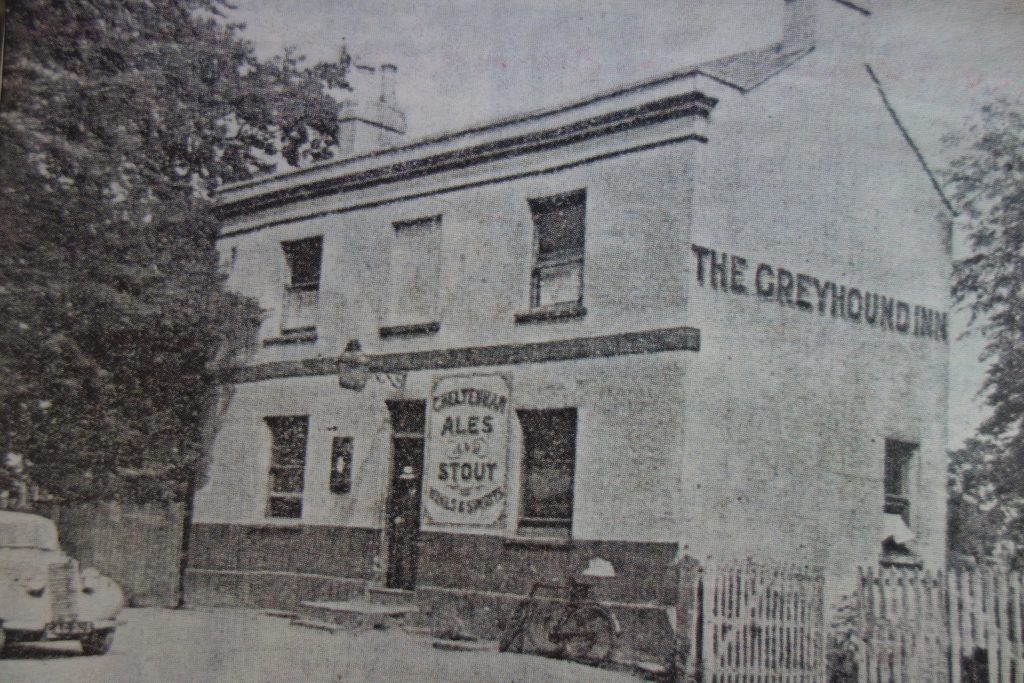
James Leighton was the owner of the Greyhound in 1891 and he leased the pub to the Cheltenham Original Brewery. It was licensed as an ale house with an annual rateable value set at £37.15s.0d. In 1903, twelve years later, the Cheltenham Original Brewery had acquired the property outright to add to their rapidly increasing tied estate. In 1903 the annual rateable value was recorded at a figure of £20.5s.0d., surprisingly some seventeen pounds and ten shillings less that twelve years previously.
The Cheltenham Brewery rebuilt the Greyhound Inn during the 1930’s, maybe the same period when they rebuilt the nearby Fox & Hounds in Prestbury Road. Part of the design incorporated small carved wooden embellishments on the door frames featuring the castle trademark of the Cheltenham Brewery. A metal gate at the side of the pub had the castle emblem within the decorative ironwork. Small but significant features that were presumably smashed to pieces during demolition.
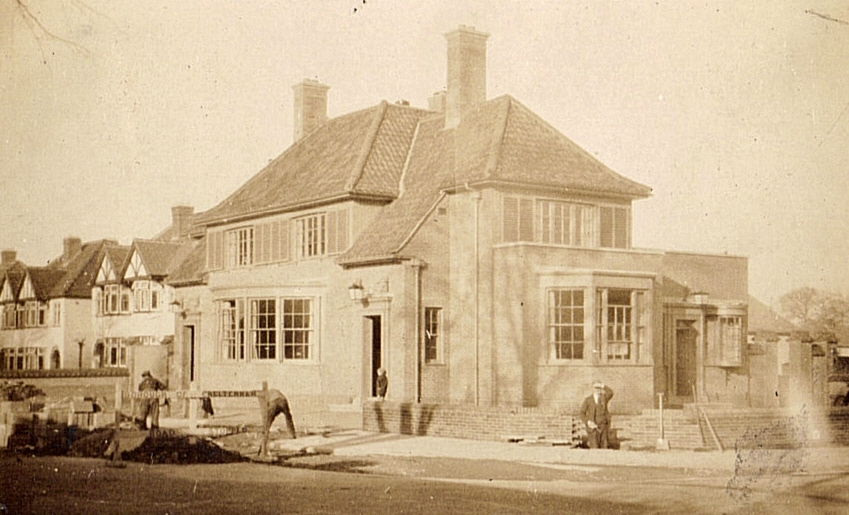
In the 1950’s the Greyhound became part of the West Country Breweries estate before passing into Whitbread (Flowers) ownership in the 1960’s. During the 1970’s and 1980’s John Ingram was a popular licensee. In the late 1980’s, following the ‘Beer Orders’ of 1989, the Greyhound became integrated into the Enterprise Inns pub estate.
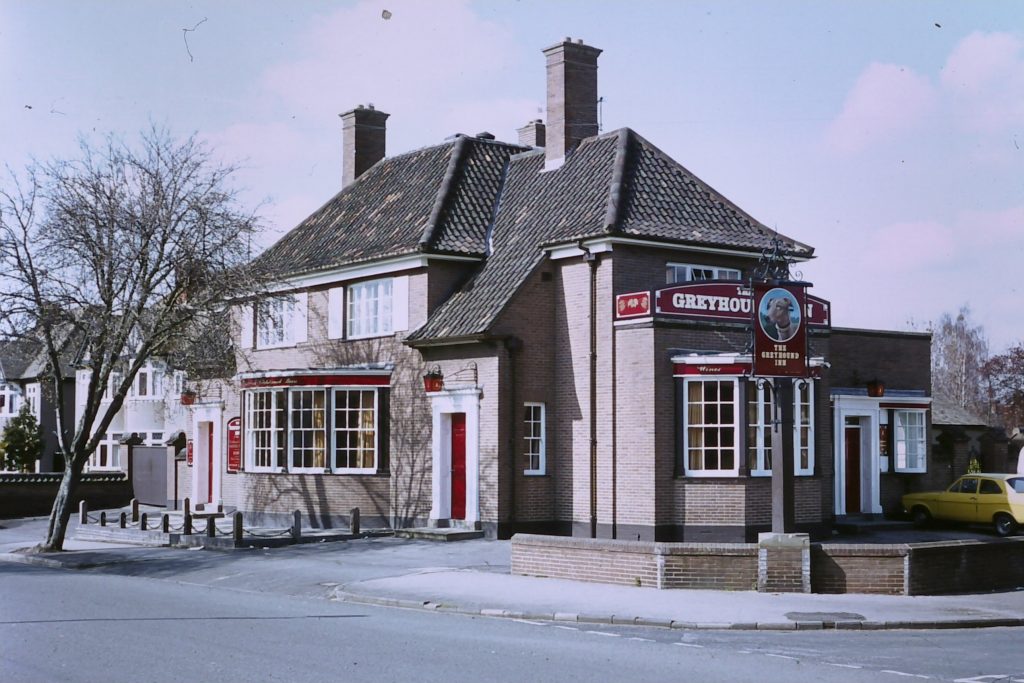
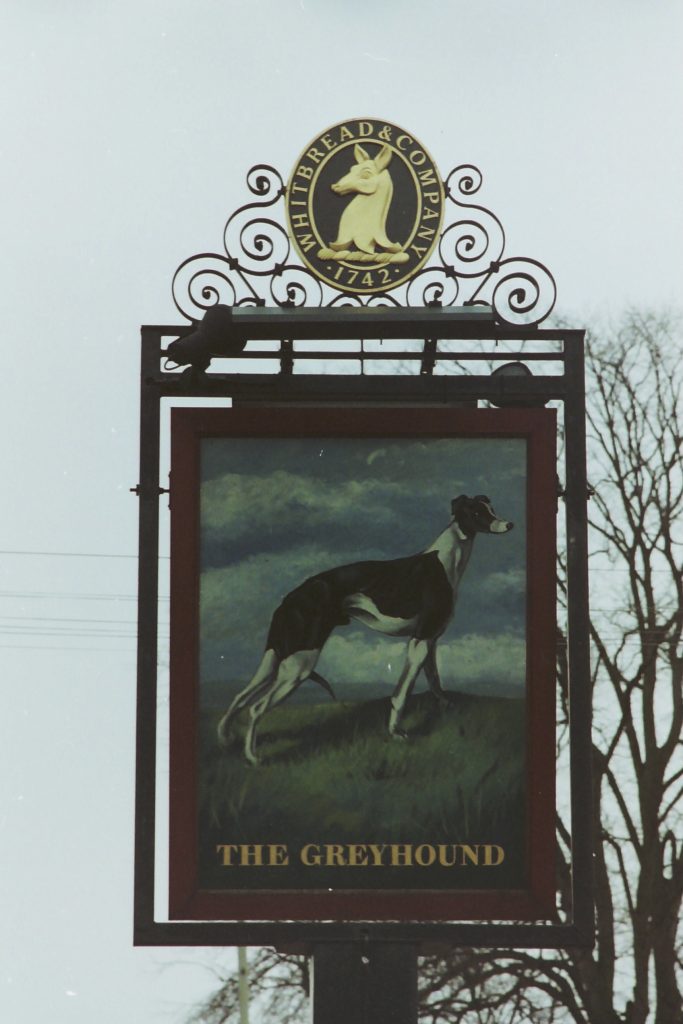
The Citizen: Wednesday, May 22nd, 1991 – Pub blaze – Firefighters in Cheltenham were called to the Greyhound Inn in the town’s Hewlett Road last night after fire broke out in a downstairs room. No-one has hurt in the blaze but the pub was severely damaged.
It cannot be denied that the fortunes and reputation of the Greyhound declined, and it became an un-loved pub. The 1996 edition of ‘Real Ale in Gloucestershire’ (CAMRA) noted that the pub had no ‘real beer’. I recall an incident – probably back in the mid 1990’s – when I witnessed a scuffle between the landlord of the Greyhound and the nearby Hewlett Arms. It was Cheltenham ‘Gold Cup’ race week and both landlords were trying to put up ‘A-Boards’ on Hales Road advertising their pubs to passing motorists. Vying for the best position the landlord of the Hewlett was alleged to place his board in front of that of the Greyhound, partially obscuring the sign. Outraged by this the landlord of the Greyhound deliberately knocked down the Hewlett Arms board and prominently placed his in front. A brief scuffle ensued with many profanities being exchanged. Not wishing to take sides I maintained a fair distance, made a hasty retreat, and did not witness the outcome of the confrontation.
The skittle alley at the Greyhound was unique in that it was the only double alley in Cheltenham. In its heyday it was used by eight home teams, but as interest slowly dwindled only one team played on the alley in the late 1990’s. When a new landlord from London took over the Greyhound he had to be introduced to the game of skittles, having never seen an alley before.
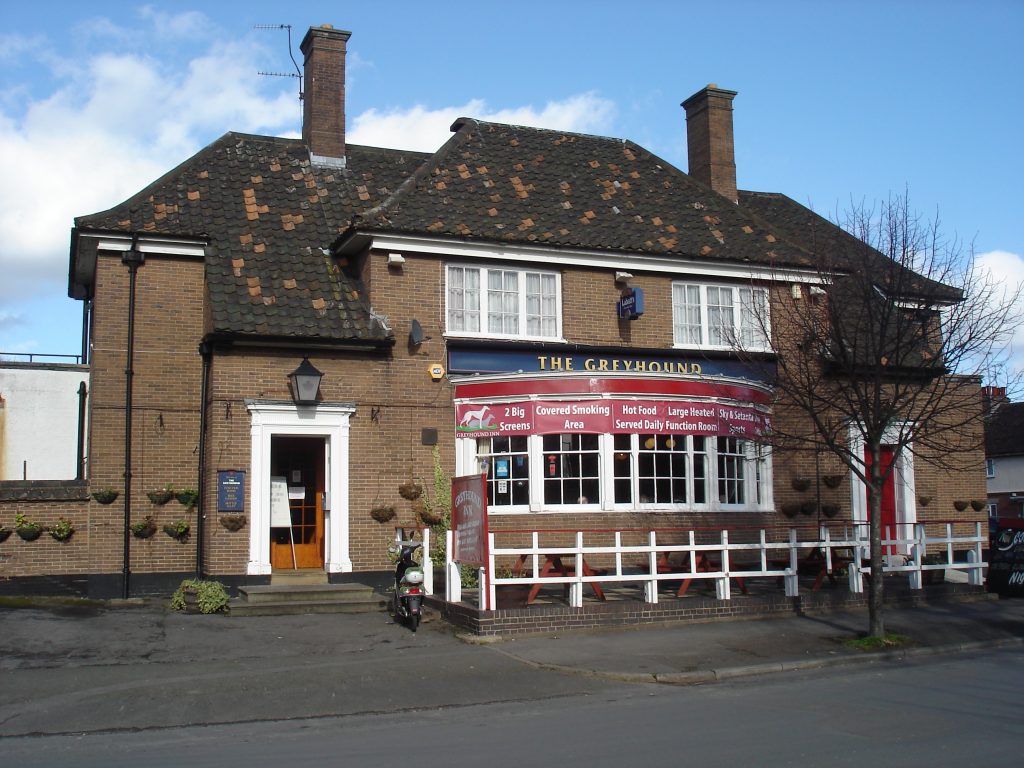
The leasehold on the Greyhound was on offer for £65,000 in September 2002 due to the ill health of the landlord. The pub was described as having a main open bar area, restaurant, function room and skittle alley. With three spacious bedrooms in owners’ accommodation, an excellent enclosed beer garden and car parking. It was listed as being free of trade tie.
An application was submitted to Cheltenham Borough Council on 5th February 2008 to demolish the Greyhound Inn and replace it with 14 flats. The proposed plans were for the erection of eleven one-bedroom apartments and two 2-bedroom apartments.
Mike Carter bought the lease of the Greyhound in 2006 with only fifteen months to go before the 10-year leasehold terms were up for renewal. Mike was immediately aware of its potential and was keen to secure the lease for the next ten years. He spent money on laying new carpets, buying new pool tables, and giving the pub a general makeover. The skittle alley was shortened to make it more user friendly. Unfortunately, the owner, developer Brian Williams, had other ideas and had already submitted outline plans to Cheltenham Borough Council for demolition and conversion to residential units. In February 2008 Mike became aware that the owner had plans to kick him out on expiry of the existing lease agreement on April 1st. A petition was hastily drawn up which gained more than 200 signatures in less than a week. The campaign to save the Greyhound was supported by the then Conservative parliamentary candidate for Cheltenham, Mark Coote. The property developer, no doubt displeased by the resurgence of popularity of the Greyhound, said: “The pub is a declining one. I was surprised when someone took over the lease because the previous landlord struggled to make ends meet.” He added: “We expect to get planning permission.”
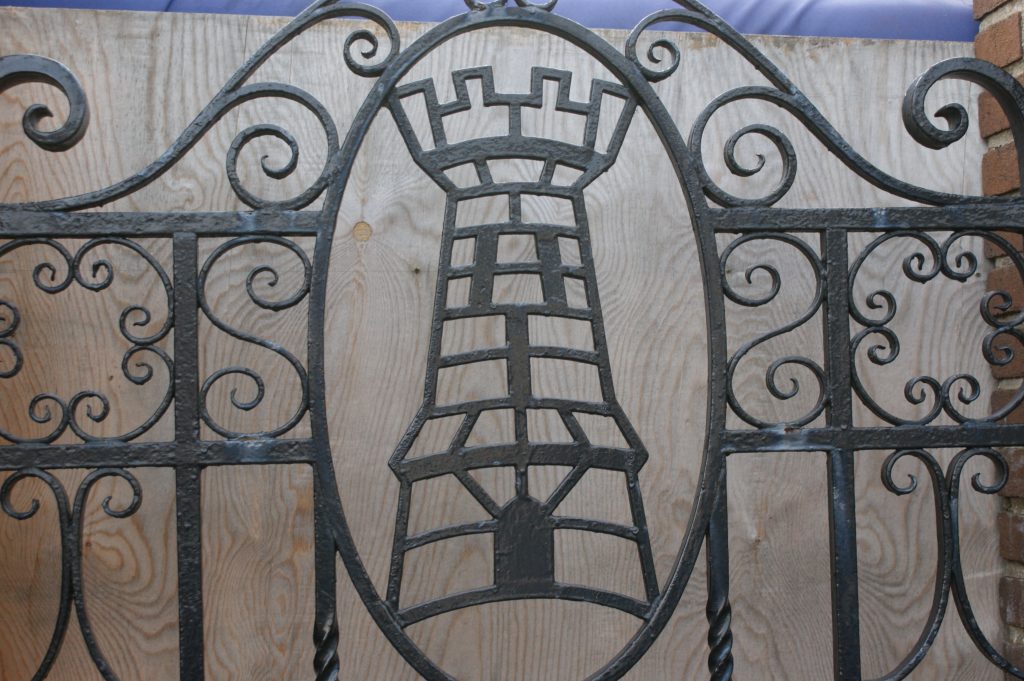
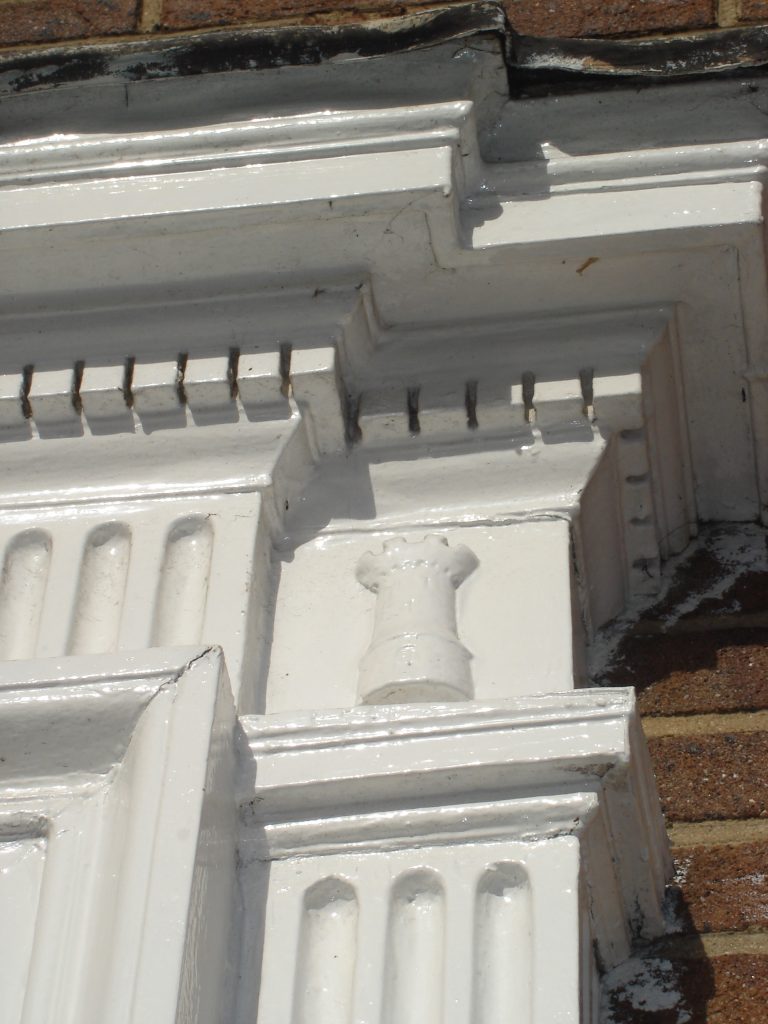
Mike Carter and Mark Coote handed in a petition to the Borough Council’s licensing committee with more than 600 signatories in favour of keeping the Greyhound as a pub. There were also 49 letters of objection. Mark Coote, Conservative prospective parliamentary candidate said: “Mike has turned the pub around and made it a going concern, in fact it’s thriving. Although it sits on Hewlett Road it serves the whole community. It’s not a pub for passing trade, many community and disabled groups use it during the week – it’s a real asset.” The planning application also drew criticism from the Cheltenham Civic Society who called on the borough council licensing committee to reject the plans. They concluded that the accommodation layout was poor and the landscaping ill-considered. “The proposal makes no positive contribution to the neighbourhood and we strongly recommend refusal.”
A second planning application was submitted to the Borough Council in April 2008 seeking demolition and the erection of fourteen flats on the site. Perhaps aware of the growing opposition to his plans the application was withdrawn soon afterwards, giving the Greyhound a temporary reprieve. Another application submitted in June 2008 detailed the construction of five apartments consisting of four one-bedroom units and one two-bedroom unit. Mr Williams then made yet another planning application to keep the building, replacing the interior with four one-bedroom and one two-bedroom apartments. Mike Carter, meanwhile, began action to renew the lease which according to the contract was renewable.
In August 2008 Councillors unanimously rejected the planning application. The report said: “The fundamental issue that is raised in objection to the scheme relates to the loss of the public house which residents consider to be a valuable asset within the community. Members will note from the objections from local residents that the loss of the public house is strongly resisted, suggesting that it’s an important amenity within the community. The provision of compatible non-residential uses in otherwise residential areas is an essential element in maintaining vital and vibrant neighbourhoods and, consequently an important part of Government’s strategy.”
Despite Cheltenham Borough Council Planning Department unanimously turning down the application 12-0, an appeal was launched in April 2009 by the owner of the Greyhound Inn. In a shock intervention in February 2009 a Government Inspector from Bristol overturned the decision. Planning Inspector R.N. Parry said that the borough council’s reasoning that the pub should remain a community asset was flawed. His statement said the policy did not apply to commercial businesses. It added: “I accept that the loss of a public house serving the local community is a material consideration. That said, this is not an instance where its loss would leave a village or some other isolated community bereft.”
Martin Horwood, the Lib Dem member of parliament for Cheltenham was aghast. He commented: “This is a bad day for Cheltenham and a disaster for Whaddon and the Greyhound’s regulars. If a popular, viable pub like the Greyhound can close despite the concerted opposition of the local council and local people, then something has gone badly wrong. If the law allows some planner from Bristol to pass judgement in a few minutes and close down an institution at the heart of a local community, then we must change the law.”
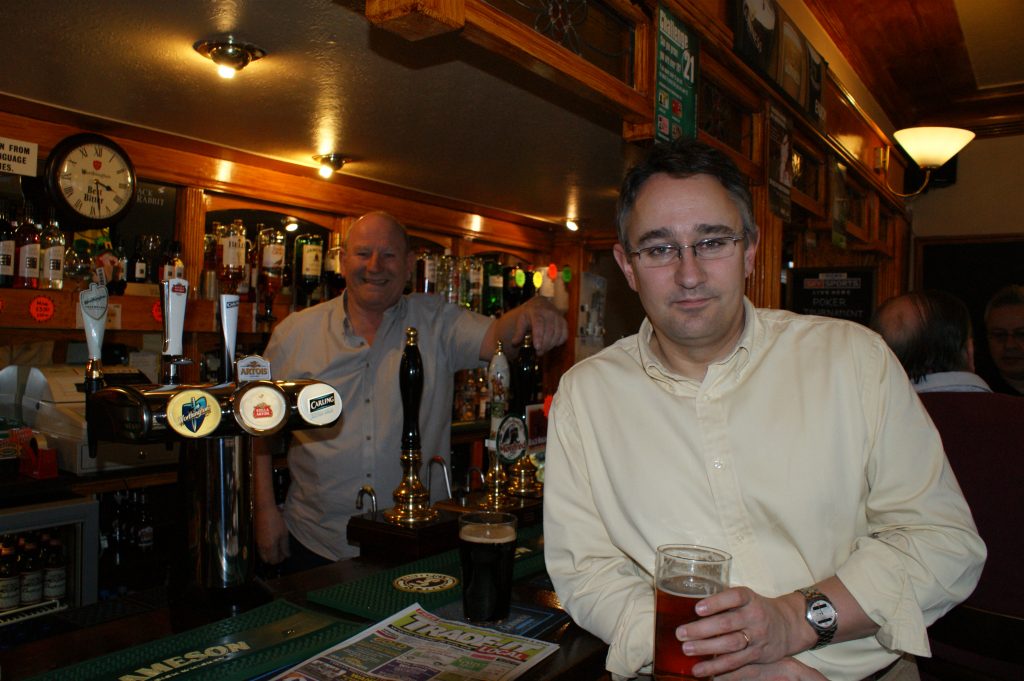
Tony Aburrow, the chairman of Gloucestershire CAMRA, was scathing: “A faceless bureaucrat, with no knowledge of the locality nor of the value of the pub to the community, drove up from Bristol, got out of his car, looked at the exterior of the Greyhound, got back into his car and drove back to Bristol and then granted the application. This crass decision which goes against the wishes of the local community and local planning committee is cast in stone, as there is no appeal allowed, except for malpractice and legal formalities.”
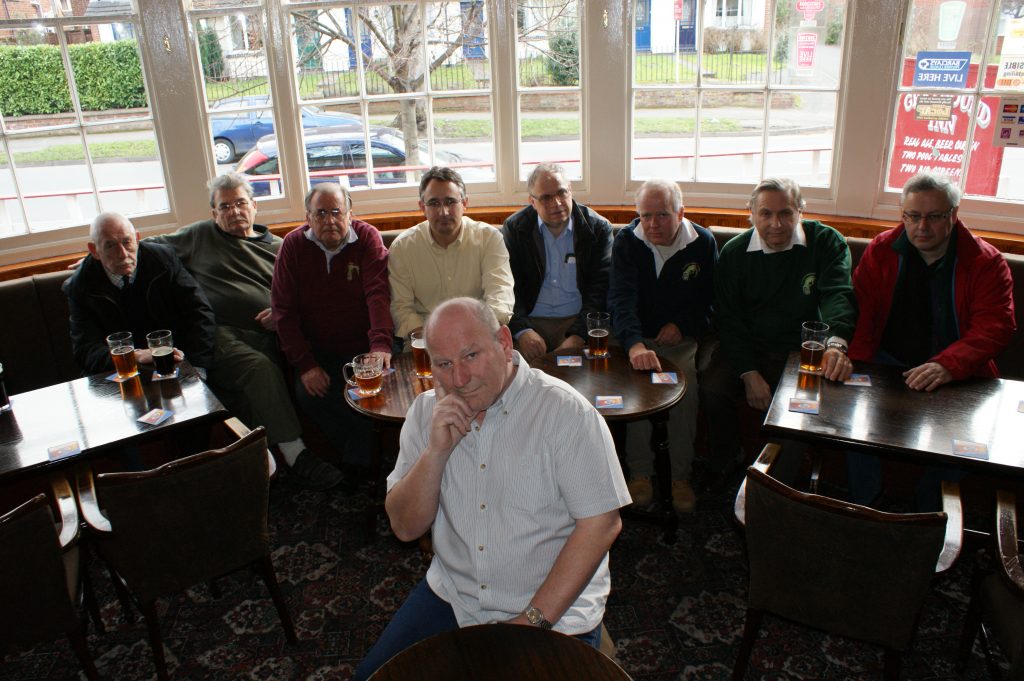
The ‘comment’ column in the Gloucestershire Echo (February 10th 2009) said: ‘Owner Brian Williams was quite entitled to call time on the much-loved Greyhound Inn once a Government planning inspector had overturned Cheltenham Borough Council’s decision to block the scheme. What will infuriate local people is that this is yet another example of the local democratic process being ignored. There is something wrong when, despite a seemingly overwhelming local view that this popular old pub should not be turned into flats, a faceless bureaucrat can insist that it is. It’s a shame for the locals and a shame for football fans looking for a pint before a match at Whaddon Road.’
Following the decision Brian Williams granted the pub permission to keep open until the end of April 2010. The planning permission to develop the Greyhound was for a period of three years.
Despite the looming possibility of closure Dave and Rachel Kelly made a determined effort to keep the Greyhound looking as good as possible and in 2008 took part in the Cheltenham in Bloom competition where they finished as runners up in the public house category. Another attempt was made in 2009 when the pubs entrance was bedecked with more than a dozen baskets. Quiz nights were held in the pub. August Bank Holiday in 2009 was the annual fun day at the Greyhound with a bouncy castle, treasure hunt, lucky prize dip and barbeque being held in the garden. An auction took place which featured signed memorabilia from England’s football World Cup-winning hero Sir Geoff Hurst. Another successful and well patronised event was the Greyhound ‘spook-tacular’ Halloween night in 2009 when the pub was transformed into a haunted castle and pub-goers wore fancy dress costumes. Dave Kelly said: “We were absolutely packed with several hundred people coming along. The atmosphere was fantastic. It just goes to show how important the pub is for the local community.”
Another initiative was the siting of a van selling tasty Indian cuisine outside the Greyhound Inn. In December 2009 pub manager Dave Kelly told the Gloucestershire Echo: “It’s gone done very well with locals so far. People are welcome to buy their curry from the van and come and enjoy it inside the pub with a beer.”
A fundraising night in February 2010 at the pub for the charity ‘Help the Heroes’ was boosted when some regulars at the pub joined Dave Kelly for a 12,000 ft sky-dive. More that £3,000 was raised. This was the ‘last hurrah’ before the enforced closure. Dave said: “We wanted to go out on a high and over the last few months we’ve made a concerted effort to support Help for Heroes.” He added: “We’ve had some great times and although we have known it was going to close, it’s still a bitter blow. Whaddon needs a pub of its own. The area won’t be the same without it.”
The final call of ‘last orders at the bar’ were given on Saturday April 24th 2010 and the keys were then handed back to the owner.
In June 2010 a giant 10 feet hoarding was put up in place around the Greyhound Inn. A spokesman for Brian Williams said that it was a “standard safety measure designed to keep intruders out.” The real reason became apparent on the 4th June when bulldozers smashed their way through the Greyhound. It was an unauthorised demolition as Brian Williams did not have the required documentation. Under the building act of 1984, a demolition licence is required at least six weeks before a building is knocked down, with applications made to the local authorities. No regard was made of the type of materials used when it was built with the strong likelihood of asbestos being present. A spokesman representing Mr Williams claimed that it was simply an ‘innocent oversight’.
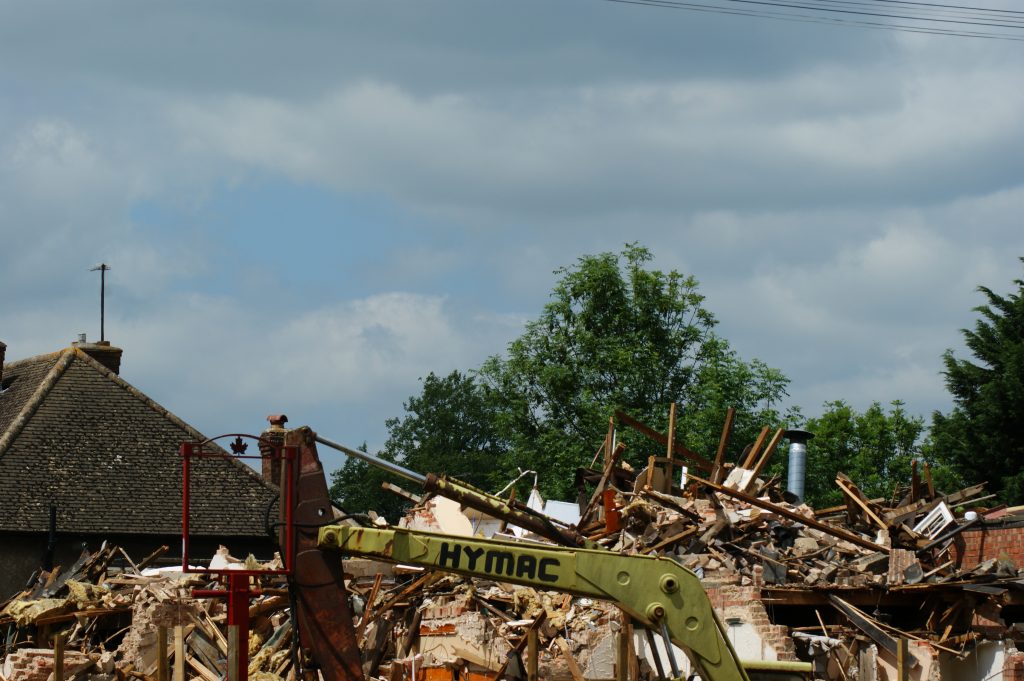

Brian Williams Property Ltd was ordered to pay £1,800 in fine and court costs for reducing the Greyhound Inn to rubble without permission. His defence argued that Mr Williams was a ‘one-man band’ business set up in 2006. It was admitted that the sole intention of purchasing the Greyhound was to redevelop the site. It was said that it was Brian Williams’ ‘naivety’ over council rules that led to the problem. After the court case Dave Kelly, ex tenant, said: “The fine gives Mr Williams a bit of a bloody nose, but nothing more.” The Gloucestershire Echo ‘comment’ column (17th November 2010) gave their opinion: ‘Somehow £1,800 seems rather a small price to pay for being able to do exactly what you please with a building site. Right up until the diggers moved in, the residents of Whaddon had desperately hoped that their local would be saved. If not that, then at least a sympathetic redevelopment. But with one swing of a grab arm Brian Williams put paid to that. The £1,800 fine melted out to his company for failing to obtain the appropriate demolition licence from Cheltenham Borough Council is nothing more than a limp slap on the wrist. It’ll do nothing to deter other developers who decide they’re above the law – no matter how reckless their actions.’
It took two months before Brian Williams made his response (January 2011), but he declined to apologise simply issuing a statement: “It is a pity that pubs are no longer economically viable in this day and age. People need places to live and this development will provide a mix of house designs to meet local demand.”
The rubble had not been cleared from the site in September 2010 and it was feared that air-bourne asbestos fragments were contaminating the area. An abatement order was served by Cheltenham Borough Council ordering the materials containing asbestos to be removed.
In March 2011 Brian Williams won planning permission to built six semi-detached houses on the site.
The rubble from the demolished pub and surrounding wooden barriers were still in place a year later in November 2011 prompting complaints from nearby residents. A woman living opposite the site of the Greyhound told the Echo: “We are up on a slight incline which means from upstairs we can see behind the boards right into the site. It looks terrible. It’s not the kind of thing anyone wants opposite their home.” She added, “It’s a shame as it used to be a good pub.” Another resident claimed that they had seen vandals breaking in and graffiti was covering the boarding.
In November 2011 Brian Williams was being represented by Vision Mill Architects. A spokesman from the architects told the Echo that Mr Williams was looking into how he could finance the project. “He has approached a number of financiers. When people take on a project like this they normally do so with the help of a bank loan. That is the issue right now. Other than that, everything is green for go. The message to residents is that this will happen. We cannot say when at this stage but hopefully in the not-too-distant future.”
The derelict former pub site still had not been cleared in July 2012. An angry resident said: “If the owner cared about the community, he wouldn’t have knocked it down without being ready to build something in its place. It’s just not good enough.” The Gloucestershire Echo tried to contact Mr Williams, but he was unavailable for comment. When Vision Mill Architects were contacted they said: “Perhaps one of the reasons why there is a lot of rubble left over is because the plan is to recycle it for the building project when it does go ahead.”
The foundations for six new homes were laid at the site of the former Greyhound in March 2014 but then building work suddenly stopped. Blue Build were the builders contracted to carry out the work on behalf of Brian Williams. Richard Benson, managing director of Blue Build, told the Gloucestershire Echo: “We have laid the foundations but before we can continue it has to go back to planning for some tweaks to the original plans. We were hoping to get it finished by September, but now we are probably looking at sometime early next year.” A resident in nearby Priors Road contacted the Echo in June 2014 about the lack of progress. He said: “They laid the footings a few months ago but nothing has been done since then. Nobody’s been there for months.”
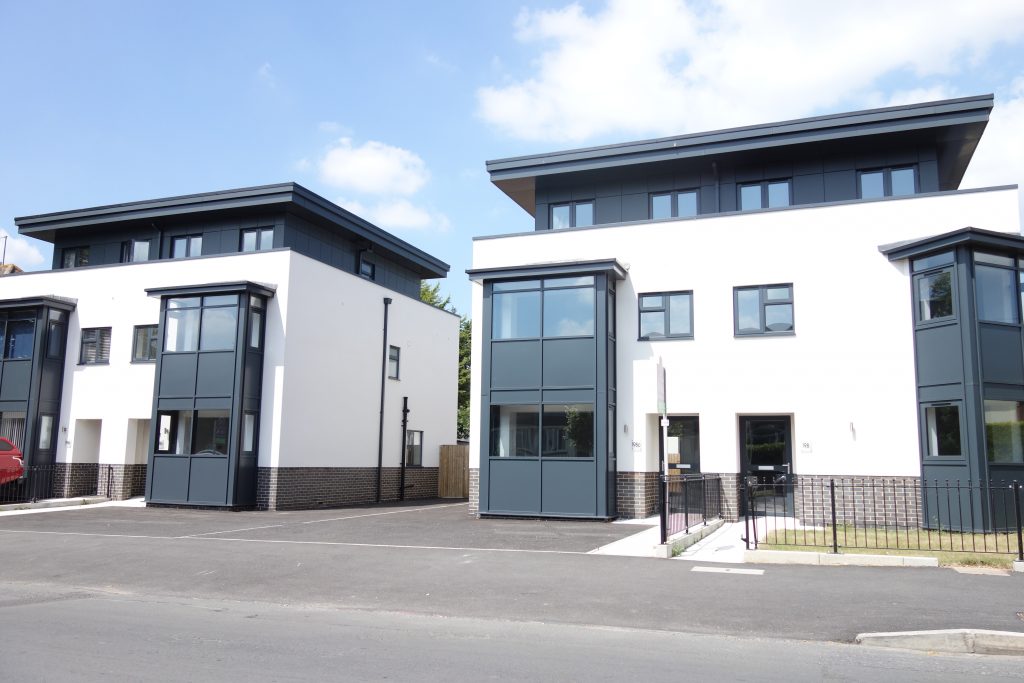
Modern apartments have finally been built on the site of the Greyhound Inn.
Landlords at the Greyhound Inn include:
1852,1857 Mrs Keylock
1870,1878 Philip Cook
1883 Alfred Lines
1885,1891 James Dowdeswell
1902 Mrs M.J. Wheeler
1903,1906 Mary Grace Wheeler
1919 James Bradshaw
1926,1927 Mrs Jane Bradshaw
1939 Mrs Jane Walter
1970’s – 1980’s John Ingram
2000 Alex and Maureen Lee
2007,2008 Mike Carter

